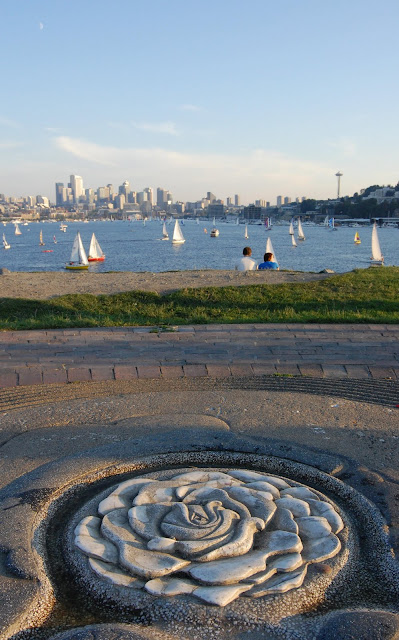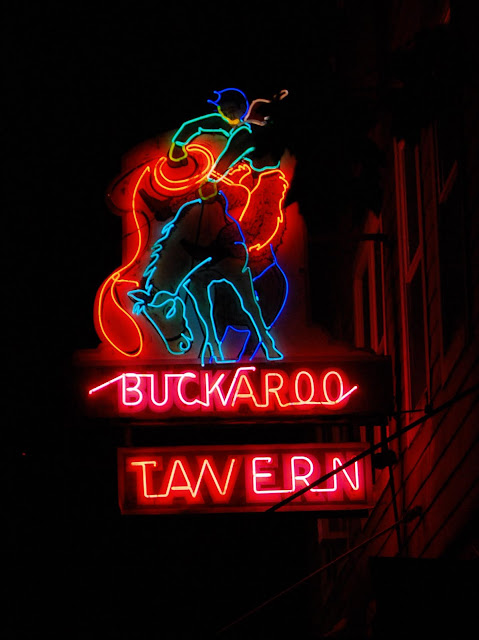
The Kreilsheimer Promenade at the Marion Oliver McCaw Hall opera house at Seattle Center as illuminated by Leni Schwendinger’s “Dreaming in Color.”
The opera house was originally opened in 1962 for the World’s Fair. After a dramatic $127 million renovation it was reopened in June 2003. The 2900 seat hall is home to the Seattle Opera and the Pacific Northwest Ballet. The building architects were LMN Architects.

The Kreilsheimer Promenade incorporates the lobby’s five story, 130 feet long, serpentine glass wall, a horizontal water feature designed by Gustafson Guthrie Nichol and translucent metal scrims lit in four changing color compositions into a welcoming portal into not just the opera house, but into Seattle Center.

The water feature consists of three, 48 foot long stone panels tilted subtly towards the lobby. A thin layer of water flows from stone benches across the panels and into a metal grill.

“Dreaming in Color” incorporates nine, 30 foot tall metal screens, similar in design to a fireplace screen, that are suspended 12 feet above the walkway. The lighting on the scrims cycle through four color compositions—“Aquamarine, A Beguiling Song,” “Sleepwalk Into Primary Red-Blue-Green,” “Within the Northern Lights” and “Of Rothko, Section and Plane”. The color compositions were designed how music is written with the horizontal axis being time and the vertical axis being the scrims – the musical instruments of the installation.

The Opera House was originally referred to as the “House that Suds Built”. James Osborne, a saloon owner, bequeathed $20,000, an amount equal to the entire city budget, to the City of Seattle in 1861. These funds were to be used to create a forum for civic and art events and had one requirement – the city had to match his contribution. In 1886 David and Louisa Denny donated the land that would eventually become Seattle Center for public use. The land went undeveloped and Mr. Osborne’s gift grew in interest for 41 years. A city bond was passed in 1927 that raised $900,000 to match Mr. Osborne’s requirement. The resulting “public use forever” improvements brought to the city a baseball, track and football field and a civic auditorium. In 1959, work began on the auditorium that would transform it into the opera house for the 1962 World’s Fair.














